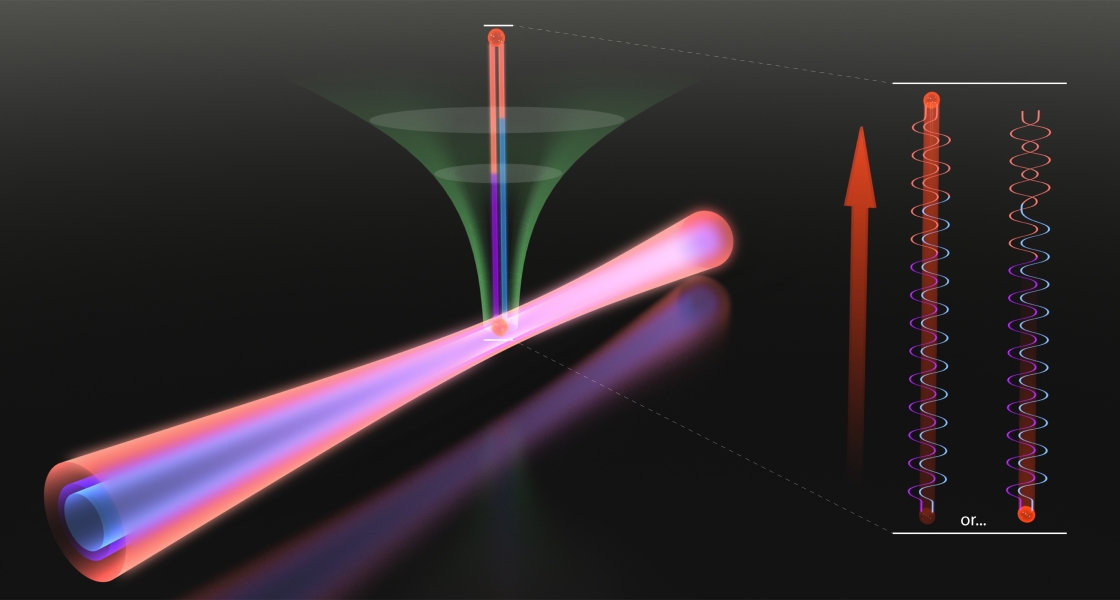Predrag Ranitovic dreams of controlling chemical reactions with ultrafast lasers. Now he and his colleagues in the Kapteyn/Murnane group are one step closer to bringing this dream into reality. The group recently used a femtosecond infrared (IR) laser and two extreme ultraviolet (XUV) harmonics created by the same laser to either ionize helium atoms or prevent ionization, depending on experimental conditions. The researchers adjusted experimental conditions to manipulate the electronic structure of the helium atoms as well as control the phase and amplitude of the XUV laser pulses.
“We can send two ionizing pulses into an atom, but we can also make the atom not see them,” Ranitovic said. “This a novel way of doing coherent control.” He explained that if the atom sees the pulses, it ionizes. But the atom can’t ionize if it doesn’t see the pulses. The process of keeping the atom from seeing ionizing pulses is called electromagnetically induced transparency.
To create electromagnetically induced transparency, the researchers modified the electronic structure of helium with the IR pulse that controls the amplitude of the XUV harmonics and the relative phase between the XUV and IR pulses. In so doing, they were able to create a quantum “double-slit” situation in which they could control the probability of ionization by interfering two electron waves constructively or destructively. If the interference was constructive, the IR-enhanced XUV pulses could knock an electron out of a helium atom, even though neither of the pulses was energetic enough by itself to remove one of helium’s two electrons. In contrast, if the interference was destructive, the XUV pulses sailed through the helium atoms as if they weren’t even there.
Another way to think about helium ionization is that three “colors” of light influence a helium electron. The three colors, none of which is visible to the human eye, are IR photons (red in the figure) and two higher-energy XUV photons (blue and purple in the figure). By adjusting the three colors, Ranitovic and his colleagues showed that they can launch an electron wave in a helium atom along two different quantum pathways. The wave traveling the different quantum pathways has the same amplitude but opposite phases. It cancels itself out on the way out of the helium atom, thus controlling the likelihood that an electron will separate from its parent atom. This new technique has great promise. A paper describing the new technique was selected as an Editor’s Suggestion in the May 13, 2011, issue of Physical Review Letters.
The effort to develop the new technique included scientists in California and Japan as well as at JILA. The Kapteyn/Murnane team included research associate Ranitovic, graduate student Craig Hogle, former research associate Xibin Zhou, as well as Fellows Margaret Murnane and Henry Kapteyn. The JILA team collaborated with theorist colleagues at the University of Tsukuba (Japan) and the University of California, Berkeley.
The theorists helped Ranitovic understand how the IR laser worked with the XUV pulses to ionize helium. The XUV pulses alone cannot ionize helium atoms; they can only excite them. Ionization requires additional energy from IR photons, 5 in the case of one of the XUV harmonics and 3 in the case of the other. The IR laser field also modifies the electronic structure of helium, making it easier for the researchers to control the ionization process.
Ranitovic is now leading efforts to extend the new coherent-control scheme to simple molecules such as hydrogen, or H2. “Once we understand simple systems, we can apply our new technique to complex molecules and chemical reactions,” Ranitovic said.




